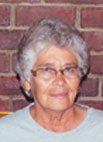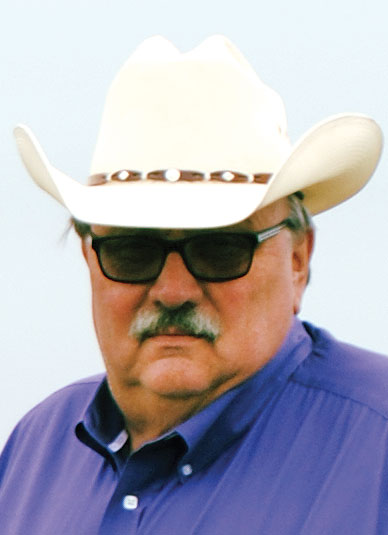
Many future beef cattle farmers learn to handle a variety of animals by participating in 4-H Clubs or FFA. Others, such as sisters Colleen and Allison Byrn, learn first hand from a family of farmers. The 2013 Tulsa State Fair captured the attention of Colleen and Allison, daughters of Terry Byrn and the granddaughters of Ronnie and Patsy Summers of Afton, Okla., in Ottawa County. Both Afton High School Agriculture students had winning achievements from the Tulsa State Fair. Colleen, 17, won Reserve Champion Heifer and Champion Bred/Owned Angus-Santa Gertrudis cross. Allison, 16, won Grand Champion Heifer and Reserve Champion Bred/Owned Santa Gertrudis.
Patsy consistently searches the Internet for livestock competitions for her granddaughters. “When I have free time, I look for events for the girls I enjoy going to them and seeing their excitement,” said Patsy. Terry interjected, “That is, if the girls do not beat her to it and are dragging her out the door for a competition they wanted to enroll in.” Ronnie is very proud of his granddaughters. “They pick their heifers from the pasture, break them to lead, work them and usually turn out winning breeds. We do not have to pay several thousand for them to show and it makes us feel good that they raised them and they come out winners,” stated Ronnie.
Ronnie and Patsy enjoy the lifestyle they chose in 1971 raising cattle on their Standing “P” Ranch. (The “P” stands for “Proud.”) They raised dairy cattle until 1986 when Patsy decided to go back to college to become a registered nurse. They own 220 beautiful acres of grazing territory for these healthy bovine animals. “We converted to Santa Gertrudis heifers because they are disease resistant and have no problems calving. As soon as they hit the ground they grow fast,” said Patsy.
They preferred beef breeding since it was easier whereas dairy was 24/7. Artificial Insemination is the alternative to breeding their livestock next to breeding naturally. “We usually do not buy heifers but we will AI them to get better heifers or a better bull,” said Patsy. It can be expensive to do AI, especially if it does not take the first time or two but it’s cheaper to put them with a bull. “A lot of times, show heifers won’t take because of the extra fat.”
Their cattle are finished 60 days before being slaughtered. They put them on grain to fatten them; this will give the meat a prime marble texture and tenderness. The grain mix consists of oats, corn, cottonseed meal, sorghum, alfalfa pellets, vitamins and calcium. They eat primarily grass and hay prior to the supplements. “There is still a lot of work that goes into breeding beef cattle but we still love it. There’s nothing like walking amongst them to see what you have done,” said Patsy.
The calves will be replacement heifers and graze all year round on prairie grass. To ensure high energy during the winter months, they supplement with Prolix, which is a liquid feed consumed year-round. Groups of cattle are fed from a plastic tank with four lick wheels located near their water source. Having free choice to liquid supplements does not force a “catch up” at the start of a traditional supplemental feeding season. The Prolix stimulates the rumen in the cow which results in an increased overall feed intake, improved digestion and increased breeding. “The cows love molasses which is the main ingredient in the Prolix along with vitamins and minerals,” said Patsy.
“This year was a good year for baling hay; we baled twice. Last season was short and we ended up having to buy hay. But this year we averaged about 500 big bales. We try to get the best nutritional hay which is for us to wait until July 4, even if it looks good before then. You do not want it to get too long,” advised Patsy. She averages that about 2.5 acres of land is needed per cow depending on the quality of grass and rain. From April to September the grass is still nutritious. Patsy continued, “We start putting bales out at the end of September. Last year we had a lot of thistle and put an organic fertilizer and organic pesticide on it and this year it came back twice as heavy. Now we just brush hog it. Our three donkeys love thistle which helps clear it out.”
Ronnie concluded, “Farming has always been a learning experience from the beginning. We like that we have family who jump in and help. Most importantly, Colleen and Allison both have not only learned discipline by showing cattle but also responsibility. This is a life experience. Their life experience. If you keep taking steps forward and keep doing it with effort and initiative, you cannot help but win. And if they lose, they work harder because they know what they want.”







